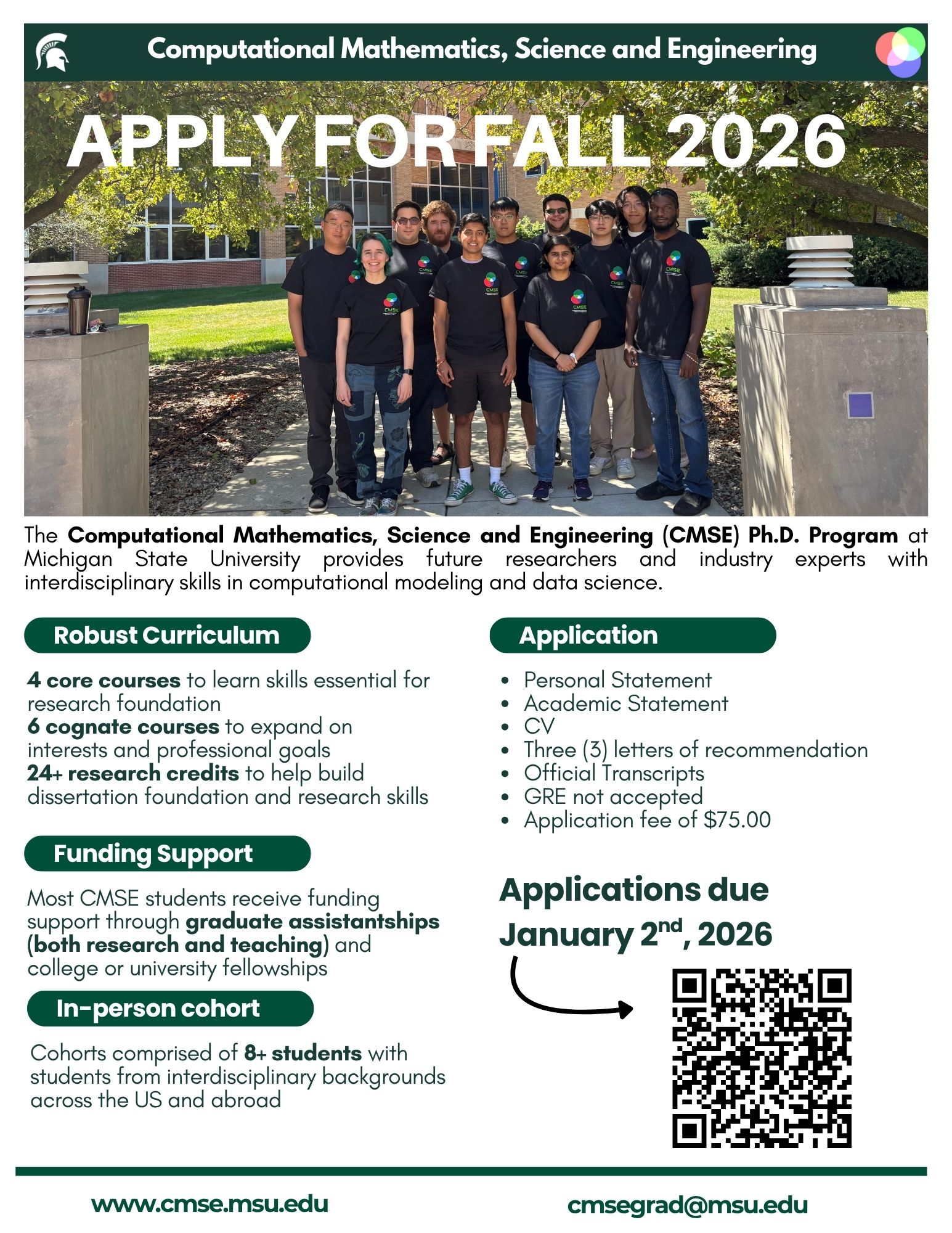Dissertation Defense of STT/CMSE Sikta Das Adhikari
Department of Statistics and Probability
College of Natural Science, Michigan State University
Dissertation Defense Notice
Tuesday, June 4, 2024
9:00 a.m.
In Person: C405 Wells Hall
Via Zoom: https://msu.zoom.us/j/5961819602
Meeting ID: 596 181 9602
Passcode: 12345
“Advanced Statistical and Computational Techniques for Genomic Data Analysis”
By
Sikta Das Adhikari
Abstract:
The human body is an incredibly complex system that researchers have studied for decades to uncover its secrets. Genetic, transcriptomic, and epigenetic data each offer unique insights into its functioning. Recent technological advancements have enabled the generation of vast amounts of high-quality biological data, creating unprecedented opportunities to explore molecular mechanisms underlying health and disease. Analyzing these diverse datasets is crucial and developing advanced statistical and computational models to handle these complex datasets is now more important than ever for translating biological information into actionable insights and driving breakthroughs in medical research. This dissertation introduces three novel statistical and computational models developed to address key challenges in the analysis of genetic, epigenetic, and spatial transcriptomic data. The primary focus of the presentation will be on spatial transcriptomic data analysis, an emerging field with significant potential for biological discovery. The presentation provides an overview of the nature of these datasets, the analysis goals, and discusses the existing methods for detecting spatially variable genes, which is the first crucial step in analyzing spatial data, along with downstream analyses. The presentation introduces cSVG, a newly developed hypothesis-testing-based framework for improved spatial domain detection by spatially variable gene clustering while adjusting for cell type effects. This method not only detects spatially variable genes but also addresses other critical challenges in the field and holds promise as a potent tool in spatial transcriptomics analysis.
Guidance Committee
Dr. Jianrong Wang, Co-Chair Computational Mathematics, Science and Engineering
Dr. Yuehua Cui, Co-Chair Statistics and Probability
Dr. Lyudmila Sakhanenko Statistics and Probability
Dr. Haolei Weng Statistics and Probability
Dr. Rongrong Wang Computational Mathematics, Science and Engineering



